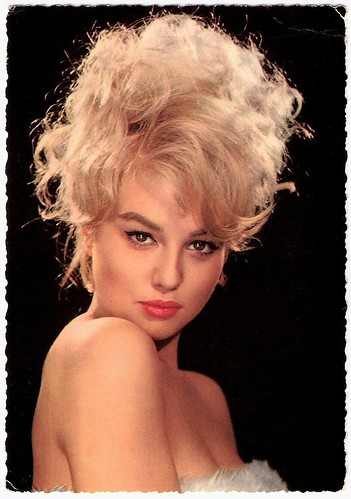
German postcard by Kruger, no. 902/162.

French postcard by Editions P.I., Paris, no. 1066. Photo: Dimitri/Dalmas.

German postcard by Kruger, no. 902/76.
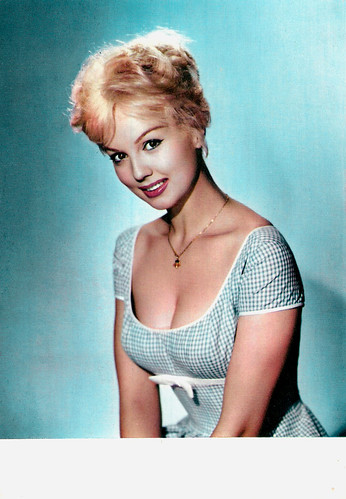
French postcard by Editions P.I., Paris, no. 1014. Photo: Sam Lévin.
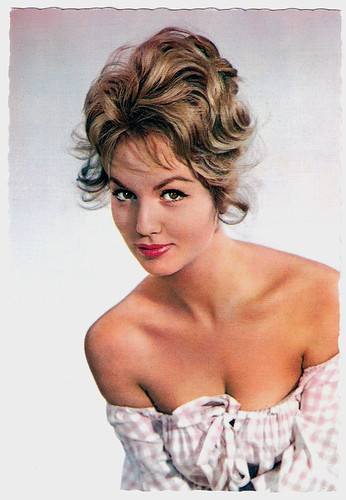
French postcard by E.D.U.G., no. 143. Photo: Sam Lévin.
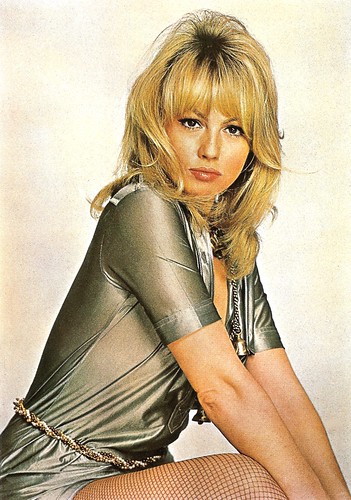
French postcard by E.D.U.G., no. 501. Photo: Sam Lévin.
Seduction scene
Marie-Helene Demongeot was born in Nice, France in 1935 into a family of actors. Her parents met in Shanghai, China, and moved to Nice, France.
Her mother, Klaudia Trubnikova, was a Russian-Ukrainian emigre from Kharkiv who escaped from the horrors of the Russian Civil War. Her father, Alfred Demongeot, was of French-Italian heritage. The family was bilingual and young Demongeot was able to use Russian and French, but eventually switched to French. She grew up in Nice.
After the war, at 13 she went to Paris and continued her education there. She studied piano under the tutelage of Marguerite Long and Yves Nat. At the age of 15, she became a model in the atelier of Pierre Cardin and studied dramatic art with Marie Ventura at Le Cours Simon in Paris.
Two years later she made her film debut with a supporting role in Les enfants de l'amour/Children of Love (Léonide Moguy, 1953) starring Etchika Choureau.
More small roles followed in Futures Vedettes/Joy of Living (Marc Allégret, 1955) with Brigitte Bardot, and the British musical comedy It's a Wonderful World (Val Guest, 1956).
Then she had her breakthrough at the side of Yves Montand and Simone Signoret with a memorable seduction scene in Les sorcières de Salem/The Crucible (Raymond Rouleau, 1957), based on the play by Arthur Miller.
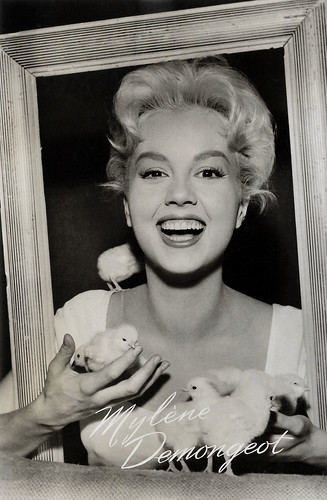
Dutch postcard by Uitg. Takken, Utrecht, no. AX 3864.

West German postcard. Photo: DEFA. Publicity still for Les sorcières de Salem (1957).
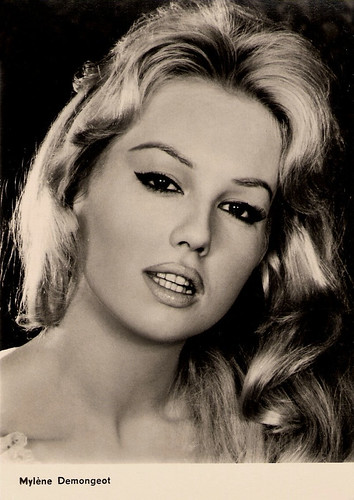
East German postcard by VEB Progress Film-Vertrieb, Berlin, no. 1852, 1963. Retail Price: 0,20 DM. Photo: Progress.

French postcard by Editions P.I., Paris, no. 1039, offered by Les Carbones Korès 'Carboplane. Photo: H. Coste.

Dutch postcard by IFP, Amsterdam, no. 3014.
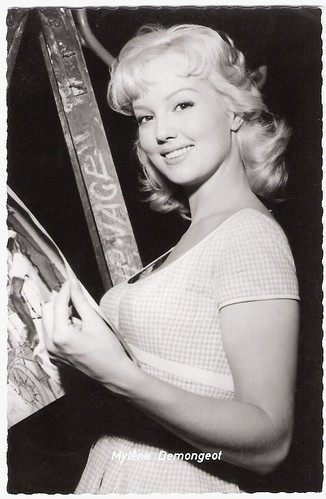
West German postcard by Kolibri-Verlag G.m.b.H, Minden/Westf. Sent by mail in the Netherlands in 1964.

Dutch postcard by Uitg. N.V. v.h. Weenenk & Snel, Baarn, no. 133.
Manipulative but humorous
With appearances in three or four feature films yearly, Mylène Demongeot would rise to international fame in the late 1950s.
Demongeot's first notable leading role was in Sois belle et tais-toi/Be Beautiful But Shut Up (Marc Allégret, 1958) opposite Henri Vidal, where she played a 17-year-old jewel smuggler.
She further developed her screen image of a manipulative but humorous blond mistress opposite David Niven in Bonjour tristesse (Otto Preminger, 1958), and opposite Alain Delon in the comedy Faibles femmes/Three Murderesses (Michel Boisrond, 1959).
Many of her screen assignments were along the ooh-la-la lines of her Swedish maid in the British comedy Upstairs and Downstairs (Ralph Thomas, 1959).
In Italy, she played opposite Steve Reeves in the Peplum (sword and sandal epic) La battaglia di Maratona/Giant of Marathon (Jacques Tourneur, 1959), with Rosanna Schiaffino and Elsa Martinelli in La notte brava/Bad Girls Don't Cry (Mauro Bolognini, 1959) based on a script by Pier Paolo Pasolini, again with Elsa Martinelli in the comedy Un amore a Roma/Love in Rome (Dino Risi, 1960) and with Roger Moore in Il ratto delle sabine/Romulus and the Sabines (Richard Pottier, 1961).
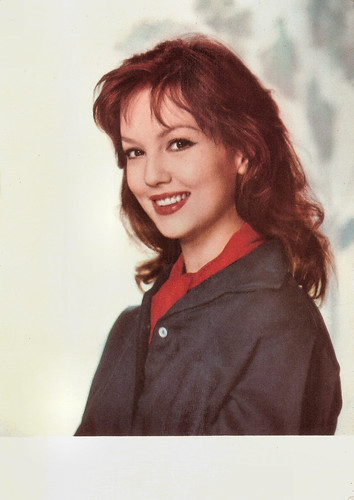
French postcard by Editions P.I., Paris, no. 1022. Photo: Sam Lévin.

Spanish postcard by Oscarcolor, no. 266.

Spanish postcard by Oscarcolor, no. 268.
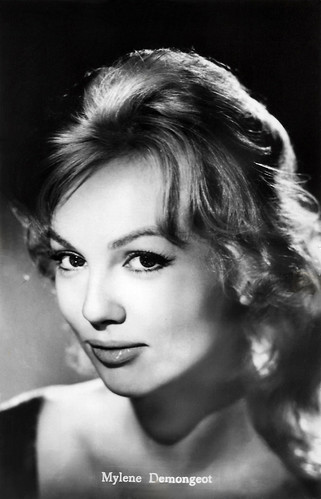
Dutch postcard by Hercules, Haarlem, no. 129. Photo: Rank. Publicity still for Upstairs and Downstairs (Ralph Thomas, 1959).
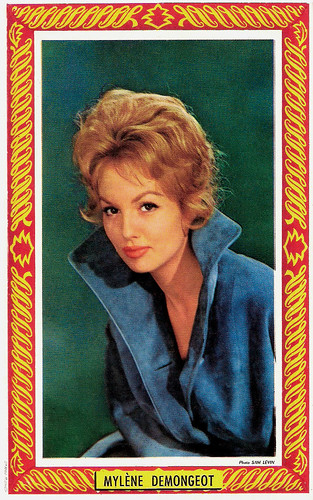
French postcard by St. Anne, Marseille. Photo: Sam Lévin.

German postcard by Krüger, no. 902/41. Photo: Sam Lévin.

French postcard by Editions Borde, Paris, no. 130. Photo: Morel.
Milady de Winter
Among Mylène Demongeot's best-known film works are the role of manipulative Milady de Winter in the two-part adventure film Les trois mousquetaires/The Three Musketeers (Bernard Borderie, 1961) and the role of Helen in the Fantômas trilogy (André Hunebelle, 1964-1967), co-starring with Jean Marais and Louis de Funès.
Other incidental interesting films were À cause, à cause d'une femme (Michel Deville, 1963) with Jacques Charrier, the comedy 12 + 1 (Nicolas Gessner, 1969) with Sharon Tate, and the Canadian drama Quelques arpents de neige/A Few Acres of Snow (Denis Héroux, 1972).
Although she gradually fazed out of her stereotypical image of a beautiful French coquette, she still looked pretty convincing in the image of a middle-aged Madame, which she developed in the 1980s in films like Tenue de soirée/Evening Dress (Bertrand Blier, 1986) starring Gérard Depardieu.
On TV she appeared in the detective series Il professore/Big Man (Steno, 1988-1989) starring Bud Spencer, and in The Man Who Lived at the Ritz (Desmond Davis, 1988).
Mylène Demongeot was the co-owner of Kangarou Films, a production company she had founded with her late husband, director Marc Simenon, the son of Georges Simenon.During the 1970s and 1980s, they produced several unsuccessful films like Par le sang des autres/By the Blood of Others (Marc Simenon, 1974) and Signé Furax/Signed Furax (Marc Simenon, 1981). Marc Simenon died in 1999.
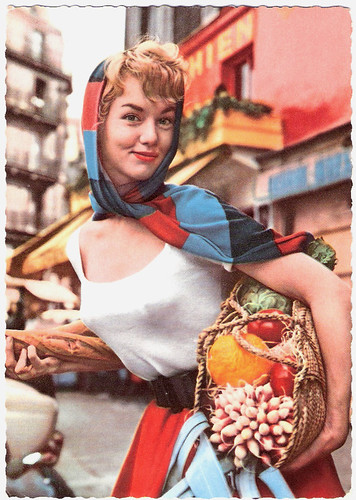
West German postcard by Universum-Film Aktiengesellschaft (UFA), Berlin-Tempelhof, no. CK 150. Retail price: 30 Pfg. Photo: Klaus Collignon / UFA.

West German postcard by Universum-Film Aktiengesellschaft (UFA), Berlin-Tempelhof, no. CK-196. Photo: Sam Lévin / UFA.
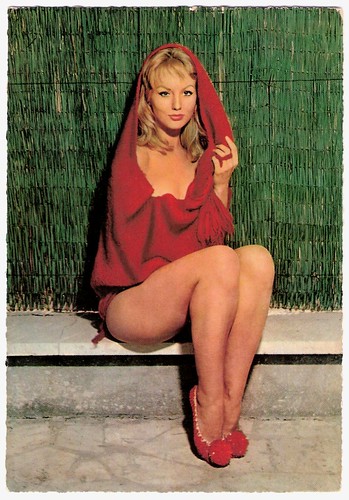
West German postcard by Krüger, no. 902/66. Photo: Bernard of Hollywood.
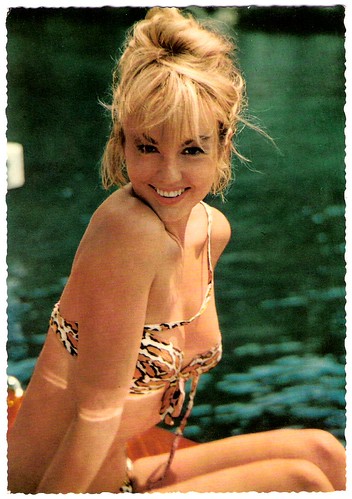
West German postcard by Krüger, no. 902/326. Photo: Gérard Decaux.

German postcard by Krüger, no. 902/327. Photo: Gérard Decaux.

Big Dutch collectors card.
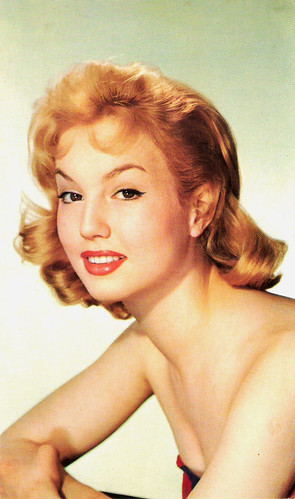
French postcard by E.D.U.G., offered by Corvisart, Epinal, no. 29. Photo: Sam Lévin.
Comeback
Mylène Demongeot made a comeback in the crime drama 36 Quai des Orfevres/Department 36 (Olivier Marchal, 2004) starring Daniel Auteuil, and Victoire (Stephanie Murat, 2004) as the mother of Sylvie Testud.
Later films were La Californie/French California (Jacques Fieschi, 2006) based on a short story by Georges Simenon, the hit comedy Camping (Fabien Onteniente, 2006), and the sequel Camping 2 (Fabien Onteniente, 2010). With director Hiner Saleem, she made Sous les toits de Paris/Beneath the Rooftops of Paris (Hiner Saleem, 2007) and Si tu meurs, je te tue/If You Die, I'll Kill You (Hiner Saleem, 2011).
Demongeot also wrote several books, the best known are 'Tiroirs secrets' (Secret Drawers, 2001) and 'Animalement vôtre' (Animally Yours, 2005). In the 2000s Demongeot made a pilgrimage to the birthplace of her mother in Kharkiv, Ukraine. There she planted a commemorative tree and presented her autobiographical book, 'Les Lilas de Kharkov' (The Lilacs of Kharkiv, 1990).
In 2006 she was named Commander in the Order of Arts and Letters for her achievements in acting. Her latest films included the comedy-drama Elle s'en va/On My Way (Emmanuelle Bercot, 2013), starring Catherine Deneuve, and Camping 3 (Fabien Onteniente, 2016), which became the second highest-grossing domestic film in France in 2016, with 3,228,313 tickets sold.
In October 2022, she announced that her peritoneal cancer, from which she had been declared cured in 2019, had returned. Mylene Demongéot died on 1 December 2022 in Paris at the age of 87.
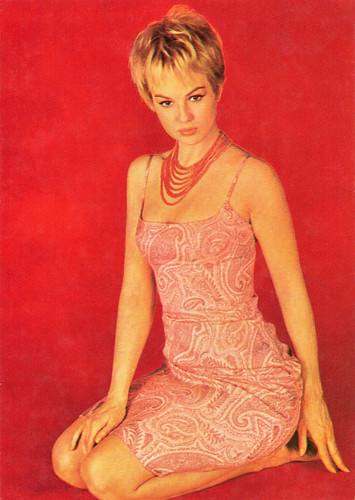
Romanian postcard by Casa Filmului Acin, no. 558.

Belgian postcard by Cox, no. 42.
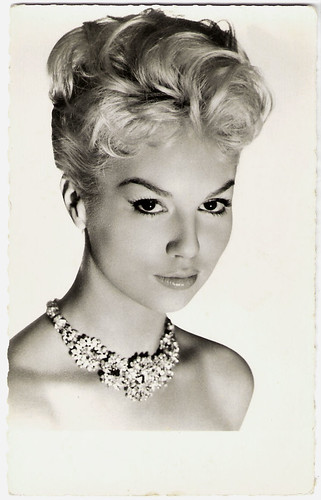
French postcard by Editions P.I., Paris, no. 955. Photo: Sam Lévin.
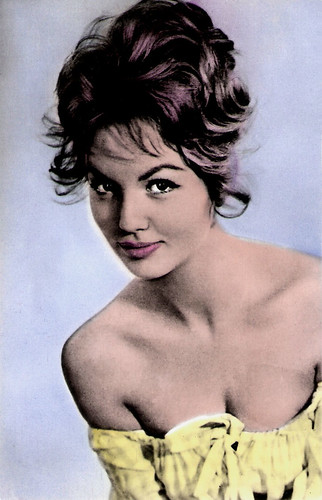
Yugoslavian postcard by Studio Sombor, no. 294.
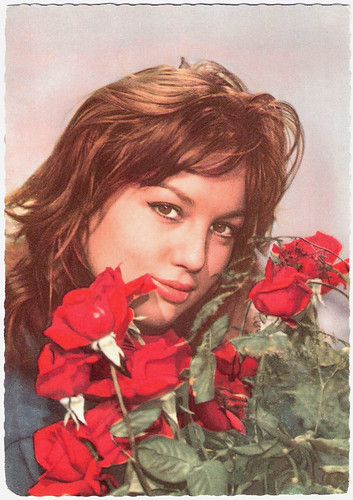
German postcard by UFA (Universum-Film Aktiengesellschaft), Berlin-Tempelhof, no. CK-268. Retail price: 300 Pfg. Photo: UFA.

French postcard by Editions P.I., Paris, no. 1035. Photo: D. Roger.
Sources: Steve Shelokhonov (IMDb), Hal Erickson (AllMovie), Personal website (French), Allociné (French), Wikipedia, and IMDb.
This post was last updated on 21 December 2023.
7 comments:
Hi!
She's very beautiful!! Great postcards. Thanks for sharing. Have a great day!
Sherrie
A View of my Life
Great postcards. Is it just a coincidence that all of the postcards are German?
Hi,
Thank you for comments.
Yes Christine, most vintage filmstar postcards were made in Germany. In the 1920's the postcards by Ross Verlag were already very popular.
I like the colour postcards by Krüger from the late 1950's and early 1960's very much.
But filmstar postcards were also produced in France, Great Britain, Italy and many other European countries, including the Netherlands.
Wow--what a stunning young woman. I had never heard of her--I have a feeling she appreciates your remembrances.
Such pretty girls !!!
I've posted your link to my facebook postcard fans page :)
What wonderful pix! Here's a little more on her B movie career:
http://bmoviebabes.blogspot.com/2015/12/46-mylene-demongeot.html
Buen corazón
Post a Comment